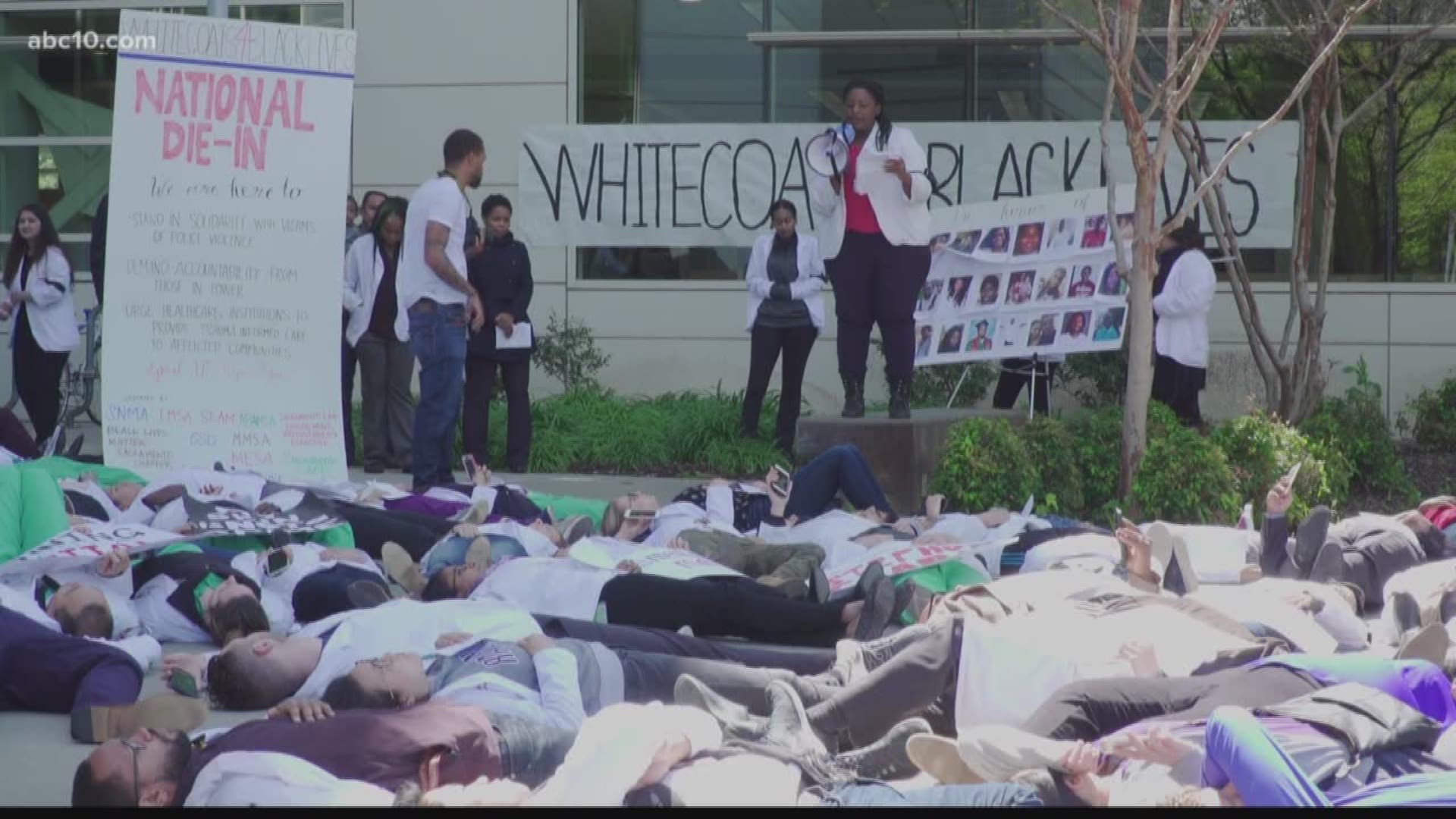Students at the UC Davis School of Medicine are calling for police accountability and demanding healthcare institutions to do more in assisting trauma patients affected by tragedies, such as the death of Stephon Clark.
“It's very easy to get sucked into learning the science, learning the books, and forgetting how this applies to all the community members outside of our four walls," said Rohini Jain.
Jain organized the ‘die-in’ demonstration, which is part of the ‘White Coats for Black Lives’ network. Similar protests were held at more than 40 medical schools across the country.
The fourth-year medical student told ABC10 she felt the pressure and responsibility to use her voice in the wake of the Stephon Clark shooting. Jain says it was important for two main issues to be highlighted at Tuesday’s event.
“One is calling for police accountability," Jain said. There have been countless numbers of cases where police brutality has been seen nationwide – especially in communities of color.”
The second one hit closer to home for the aspiring pediatrician.
“Calling on our own current healthcare systems to step up and provide those mental health resources to communities that day by day get affected by this trauma and violence."
Jain said she recently visited local high schools, and held conversations with teachers and students to try and figure out why kids have a hard time concentrating after incidents like the Clark shooting.
“It's because they don't have the resources or the skills to cope with these tragedies that keep building, and building, and building," Jain adds.
More than 50 students participated in the protest for racial justice, wearing black bands around their arms to symbolize the black lives lost to police brutality or systemic racism, Jain explained.
The medical students were joined by health professionals, as well as leaders from local organizations, including Black Lives Matter Sacramento, Council on American Islamic Relations-Sacramento-Valley, Voice of the Youth, Law Enforcement Accountability Directive, and Sacramento ACT.
Jain said students were encouraged to hold their cellphones to make a statement that often times, law enforcement officers pay more attention to the color of people’s skin than to what’s in their hands.
The third symbolic component of the demonstration was their white coats.
“When you put on a white coat, all of a sudden people start listening to you,” Jain said. “Thinking that you're an authority on certain matters that a lot of the times so many other community members have way more knowledge about. Just the symbol of a white coat makes people turn and listen to you.”

